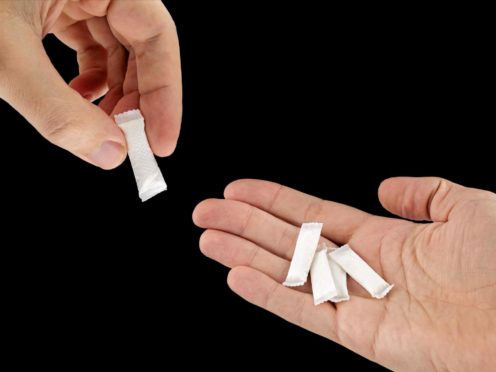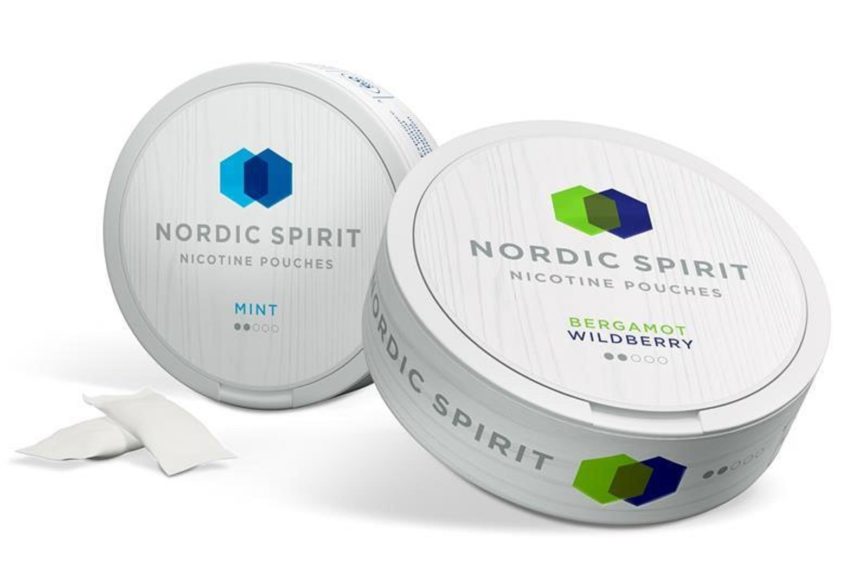Parents across Fife are being urged to be wary about a potentially addictive and harmful craze starting to sweep the region’s playgrounds.
Teaching staff at a number of schools have raised concerns about the use of nicotine pouches among teenage pupils as an alternative to cigarettes or vaping equipment.
The pre-portioned pouches are similar to ‘snus’, which is a smokeless tobacco popular in Scandinavia, but instead of tobacco leaf they are filled with white nicotine-containing powder and are placed between the lip and gum.
Experts generally agree they are less than harmful than cigarette smoking.
However, there remain concerns that the pouches could cause serious dental problems, increased heart rate and blood pressure, and even nicotine poisoning if taken in excess.
Snus has been illegal to sell in the European Union since 1992, with the exception of Sweden, where it has been popular for decades.
However, tobacco-free nicotine pouches are currently legal for sale in the UK in the shape of minty or flavoured sticks, pellets and strips – making them more attractive to younger users.
The issue has been highlighted by Kirkcaldy High School rector Derek Allan and The Courier has learned that several other schools are growing increasingly concerned by the trend.
In an email to parents, Mr Allen said: “Some kids seem to be taking up the use of little nicotine pouches.
“These are placed in the mouth inside the cheek or under the top lip and, as you might expect, there are significant health concerns around this, especially given the addictive characteristics of nicotine.”
Suggesting parents might want to watch out for them, he said: “The little sachets could possibly pass for mints and are bought online, usually coming in little tins.
“It won’t be relevant for all our families, but you’ll appreciate that I’m just trying to be helpful and proactive.”
Many different brands of the pouches are sold online. They are also available in convenience stores and petrol stations.
One make, Nordic Spirit, is branded as “a convenient and discreet nicotine product for use in situations where smoking or vaping is not possible”.
A spokesperson for Japan Tobacco International, which launched Nordic Spirit in the UK last year, said the product aimed to tap into “the evolving preferences of adult smokers and vapers, who are looking for an alternative nicotine product”.
A World Health Organisation study in 2016 suggested non-tobacco nicotine pouches are likely to have low levels of “relative risk” compared to cigarettes as they do not contain any “tobacco-specific nitrosamines (TSNA), which are carcinogenic in certain quantities”.
The UK government’s science and technology committee has recommended an “evidence-based review of the case for discontinuing the ban on ‘snus’ oral tobacco”, which may indicate a change in the UK’s approach to such products.
However, while the rules remain, nicotine pouches can ony be marketed as posing a “lower” risk than cigarettes with regard to diseases like lung cancer, heart disease and bronchitis, rather than no risk at all.
A hark back to the dangers of Skoal Bandits
News of the craze is reminiscent of the infamous Skoal Bandits, tobacco sachets sucked in the mouth, in the late 80s.
The UK Government imposed a ban on all oral snuff because of the dangers it posed.
The then health secretary Kenneth Clarke noted in Parliament that the clampdown would prevent ”snuff-dipping” – holding tobacco between the cheek and gum so nicotine can be absorbed into the bloodstream.
He said: ”We have been seriously concerned by reports from Sweden and the United States which show how attractive to young people oral snuff can become.
”We have also taken into account evidence that this habit can result in mouth cancer, which is particularly difficult to treat successfully.”
The ban did not affect traditional chewing tobacco, loose tobacco sold for pipes and cigarettes, or snuff taken by the nose.













